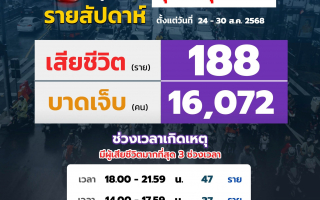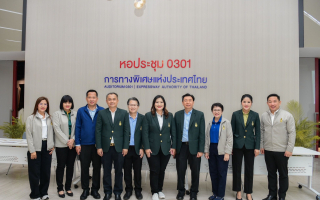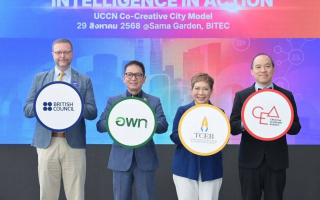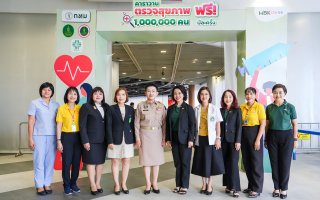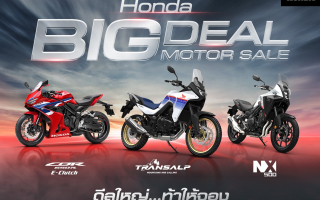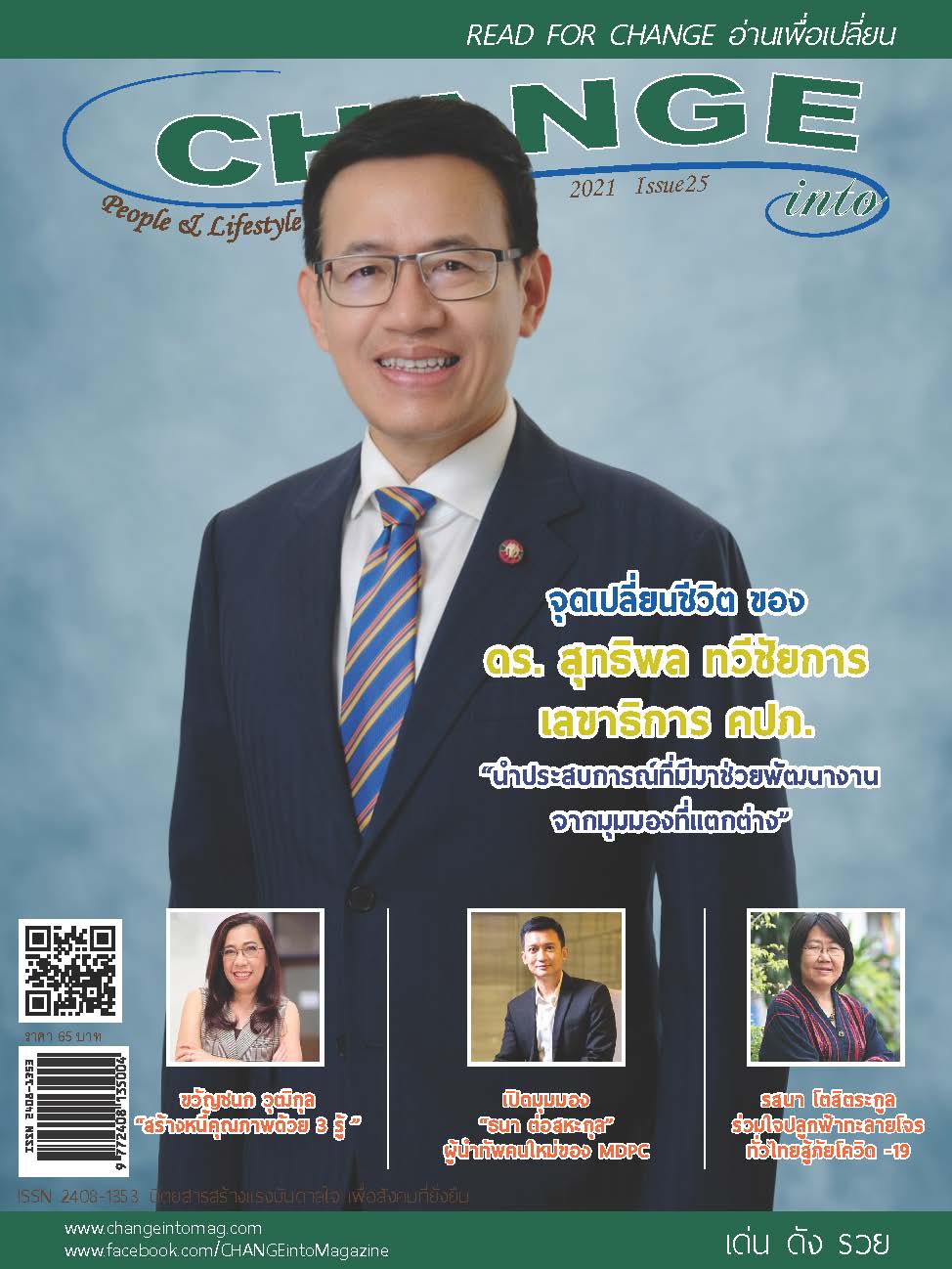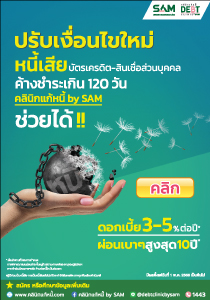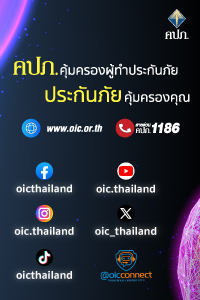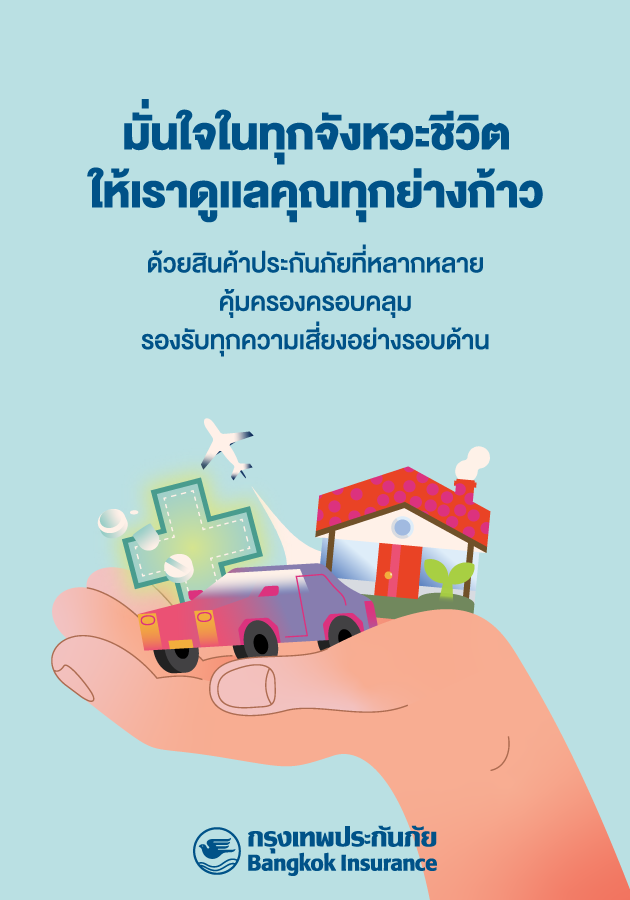ส่องแนวคิดบริหารธุรกิจแพคเกจจิ้งให้เป็นเบอร์หนึ่งภายใต้การแข่งขันรุนแรง

ส่องแนวคิดบริหารธุรกิจแพคเกจจิ้งให้เป็นเบอร์หนึ่งภายใต้การแข่งขันรุนแรง
ชีวิตประจำวันของเราต้องเจอกับแพคเกจจิ้งหรือบรรจุภัณฑ์มากมาย ตั้งแต่การบีบหลอดยาสีฟัน การแกะห่ออาหาร จนถึงการซื้อสินค้าต่างๆ ที่มีทั้งบรรจุภัณฑ์สำหรับสินค้าแต่ละชิ้นจนถึงสินค้าหีบห่อ จากวัสดุหลากหลายประเภท และยิ่งวิถีชีวิตเร่งรีบ ต้องการความสะดวกสบายมากขึ้นเท่าไหร่ ก็ยิ่งทำให้ตลาดบรรจุภัณฑ์ทั่วโลกเติบโตมากขึ้น โดยเฉพาะบรรจุภัณฑ์สำหรับอาหารฟาสต์ฟู้ด และสำหรับ E-commerce
จากศักยภาพการเติบโตดังกล่าว ทำให้ผู้ผลิตทุกขนาด ทั้งรายเดิมและรายใหม่ ต่างเข้ามาแย่งชิงความเป็นหนึ่งในตลาดนี้อย่างต่อเนื่อง เช่นเดียวกับ เอสซีจี ที่ได้ปรับเปลี่ยนจาก “ธุรกิจกระดาษ” ที่มีความต้องการกระดาษพิมพ์เขียนลดลง มาเป็น “ธุรกิจแพคเกจจิ้ง” ที่มุ่งนำเสนอสินค้าและบริการด้านบรรจุภัณฑ์ให้ลูกค้าอย่างครบวงจรและยั่งยืน (Total Packaging Solutions Provider) ตั้งแต่ปี 2558 และยังคงรักษาการเติบโตไว้ได้จนถึงปัจจุบัน โดยมีการขยายธุรกิจทั้งการลงทุนใหม่ๆ ด้วยตัวเอง และการเข้าซื้อกิจการเพิ่มเติมทั่วอาเซียนอย่างต่อเนื่อง
“ปัจจุบันธุรกิจแพคเกจจิ้ง เอสซีจี มีกำลังการผลิตกระดาษบรรจุภัณฑ์รวม 2.5 ล้านตัน ซึ่งหากไม่รวมจีน จะถือว่าเป็นผู้นำด้านการผลิตสูงสุดในอาเซียน โดยแต่ละประเทศ เรามีส่วนแบ่งการตลาดร้อยละ 22-25 โดยไทยมีกำลังการผลิต 1.8 ล้านตัน เวียดนามมีกำลังการผลิต 5 แสนตัน และฟิลิปปินส์มีกำลังการผลิต 2 แสนตัน ซึ่งเวียดนามและฟิลิปปินส์เป็นตลาดที่โตค่อนข้างมากและมีโอกาสจะขยายได้อีก ด้วยประชากรที่มีกำลังซื้อกว่าร้อยล้านคนและภาคอุตสาหกรรมที่เติบโต เรายังเข้าไปซื้อธุรกิจบรรจุภัณฑ์อาหารในมาเลเซีย เพื่อตอบโจทย์เครือข่ายร้านฟาสต์ฟู้ดขนาดใหญ่ เช่น แมคโดนัลด์ และได้เข้าไปถือหุ้นข้างมากใน Fajar ซึ่งเป็นผู้นำธุรกิจกระดาษบรรจุภัณฑ์ในอินโดนีเซียด้วย เพื่อให้บริการลูกค้าได้อย่างครบวงจร ทั้งบรรจุภัณฑ์สินค้า พลาสติกห่อด้านใน และบรรจุภัณฑ์สำหรับขนส่ง รวมถึงการออกแบบและการพิมพ์บรรจุภัณฑ์ จึงทำให้ลูกค้าทั่วอาเซียนพึงพอใจในสินค้าและบริการที่ครอบคลุมของเอสซีจี หรือที่เรียกว่า Total Packaging Solutions Provider” นายธนวงษ์ อารีรัชชกุล กรรมการผู้จัดการใหญ่ ธุรกิจแพคเกจจิ้ง เอสซีจี เล่าถึงภาพรวมการเติบโตของธุรกิจ
กลยุทธ์สร้างความแข็งแกร่งจากภายใน เพื่อตอบรับความท้าทายจากภายนอก
แม้จะมีปัจจัยภายนอกมากระทบการดำเนินธุรกิจ อย่างสงครามการค้าระหว่างจีนกับสหรัฐฯ ที่ทำให้มีการย้ายฐานการผลิตจากจีนมาในอาเซียน แต่เอสซีจีกลับมองเป็นโอกาสที่ทำให้ธุรกิจต้องเร่งพัฒนาขีดความสามารถในองค์กรอย่างต่อเนื่อง เพื่อตอบโจทย์ลูกค้าได้ดียิ่งขึ้น อย่างการนำเทคโนโลยีดิจิทัลมาประยุกต์ใช้ รวมถึงการพัฒนาผลิตภัณฑ์และบริการที่ครบวงจรใน 3 มิติ คือ 1.) การนำเสนอสินค้าให้เข้าถึงลูกค้ามากที่สุดผ่านช่องทางที่มีประสิทธิภาพ ทั้งลูกค้าที่ต้องการบรรจุภัณฑ์สำหรับการจำหน่ายสินค้าในประเทศและเพื่อการส่งออก 2.) การพัฒนาศักยภาพของพนักงาน และ 3.) การออกแบบสินค้าและการเลือกวัสดุที่ตอบโจทย์ลูกค้า โดยการจัดโครงการประกวดออกแบบแพคเกจจิ้ง เพื่อเพิ่มศักยภาพให้นักออกแบบรุ่นใหม่เป็นประจำทุกปี
เทคโนโลยีดิจิทัล ฟันเฟืองสำคัญเพิ่มขีดความสามารถทางการแข่งขัน
เอสซีจีนำเทคโนโลยีดิจิทัลมาเพิ่มขีดความสามารถทางการแข่งขันของธุรกิจแพคเกจจิ้งและตอบโจทย์ลูกค้า ขณะเดียวกันก็สามารถต่อยอดสู่การจำหน่ายโซลูชั่นที่พัฒนาขึ้นให้กับลูกค้าด้วย
นายธนวงษ์ กล่าวในเรื่องนี้ว่า “เอสซีจีนำเทคโนโลยีดิจิทัลมาช่วยตั้งแต่การเดินเครื่องการผลิตในโรงงาน เพื่อให้คาดการณ์ได้ว่าเครื่องจักรต้องซ่อมบำรุงเมื่อใดจึงจะไม่กระทบต่อการผลิต รวมทั้งใช้ตรวจสอบจำนวนอะไหล่เครื่องจักรที่มีในแต่ละโรงงาน เพื่อลดต้นทุนการสั่งซื้อที่ไม่จำเป็น และการใช้ดาวเทียมหรือโดรนสำรวจไม้ยูคาลิปตัสป่าปลูกที่นำมาทำกระดาษ เพื่อความแม่นยำและไม่สูญเสียทรัพยากรโดยไม่จำเป็น
นอกจากนี้ การที่เรามีโรงงานหลายแห่ง ขณะที่ลูกค้าก็มีความต้องการในหลายพื้นที่ หรือมีผู้แทนขายดูแลหลายคน จึงต้องนำเทคโนโลยีดิจิทัลมาช่วยให้ทุกฝ่ายสามารถเห็นข้อมูลถูกต้องตรงกัน ว่าเรามีกำลังการผลิตที่ไหนบ้างที่เหมาะสมกับความต้องการของลูกค้า ทำให้สามารถบริหารจัดการต้นทุนและการขนส่งได้ง่าย หรือการทำ Vendor Management ที่ใช้เทคโนโลยีดิจิทัลคำนวณการผลิตให้สอดคล้องกับสินค้าคงคลังหรือปริมาณความต้องการของลูกค้า และสามารถพัฒนาเป็นโซลูชั่นเพื่อนำไปจำหน่ายให้ลูกค้าที่สนใจได้ด้วย”
ผลักดันแนวคิดเศรษฐกิจหมุนเวียน ตอบโจทย์การใช้ทรัพยากรอย่างคุ้มค่า
ธุรกิจแพคเกจจิ้ง เอสซีจี ยังมุ่งพัฒนานวัตกรรมเพื่อให้เกิดการใช้ทรัพยากรอย่างคุ้มค่าสูงสุด ทั้งการใช้ให้น้อย ใช้ให้นาน หรือนำกลับมาใช้ซ้ำได้ ตามแนวคิดเศรษฐกิจหมุนเวียน (Circular Economy) ภายใต้แนวปฏิบัติ SCG Circular Way
“การที่เรามีทั้งวัตถุดิบจากเยื่อกระดาษและพลาสติก ทำให้สามารถนำมาผลิตสินค้าอย่างหลอดกระดาษหรือถุงกระดาษ เพื่อลดการใช้พลาสติกประเภทใช้ครั้งเดียวแล้วทิ้งได้ ซึ่งแพคเกจจิ้งจากกระดาษ ยังสามารถนำมารีไซเคิลเพื่อใช้ผลิตใหม่ได้ถึงร้อยละ 95-98 จึงถือว่าใกล้เคียงกับแนวคิดเศรษฐกิจหมุนเวียนมาก เช่น การทำบรรจุภัณฑ์ green carton ที่นอกจากจะนำเศษกระดาษใช้แล้วกลับมาใช้ซ้ำ ยังเสริมเทคโนโลยีการเคลือบเพื่อให้กระดาษคงความแข็งแรง แต่ใช้วัตถุดิบน้อยลงอีกด้วย
อย่างไรก็ตาม ต้องยอมรับว่าบรรจุภัณฑ์พลาสติกยังสามารถช่วยรักษาอายุผลิตภัณฑ์ได้มีประสิทธิภาพสูงสุด แต่ต้องมีกระบวนการจัดเก็บที่ดีและทำให้นำไปรีไซเคิลได้ง่าย เราจึงพัฒนาแพคเกจจิ้งพลาสติกแบบ mono-material ให้เป็นร้อยละ 40 ของบรรจุภัณฑ์พลาสติกที่เราผลิต โดยนำวัสดุชนิดเดียวกันมาประกบกันหลายชั้น (Multilayer Laminated : Mono Material) ทำให้คงคุณสมบัติการรักษาคุณภาพ ผลิตภัณฑ์ แต่นำไปรีไซเคิลได้ง่าย สอดคล้องกับการที่เราร่วมเป็นส่วนหนึ่งในองค์กรระดับโลก CEFLEX (A Circular Economy for Flexible Packaging) เพื่อส่งมอบสินค้า บริการ และโซลูชั่น รวมถึงพัฒนาบรรจุภัณฑ์ ที่เป็นมิตรต่อสิ่งแวดล้อม
นอกจากนี้ เรายังคุยกับพาร์ทเนอร์หลายบริษัทเพื่อนำแนวคิดนี้ไปใช้ เช่น การร่วมกับเทสโก้ โลตัส เพื่อ จัดเก็บลังกระดาษใช้แล้วมารีไซเคิลเป็นถุงกระดาษ และขยายไปยังลูกค้าบริษัทอื่นได้กว่า 3 รายแล้ว หรือการร่วมกับลูกค้าเพื่อพัฒนาถุงกระดาษเคลือบสารพิเศษที่ย่อยสลายได้ หรือ fibro zeal ซึ่งช่วยป้องกันความชื้นให้ สินค้า ขณะเดียวกันก็นำไปรีไซเคิลได้ง่าย อีกทั้งยังร่วมส่งเสริมแนวคิดเศรษฐกิจหมุนเวียนให้พนักงาน เพื่อส่งต่อสู่ลูกค้า รวมทั้งส่งเสริมการจัดการขยะให้กับชุมชนรอบโรงงานอีกด้วย” กรรมการผู้จัดการใหญ่ ธุรกิจ แพคเกจจิ้ง เอสซีจี เล่าถึงการขับเคลื่อนแนวคิดเศรษฐกิจหมุนเวียนให้เกิดผล
เทรนด์และโอกาสการเติบโตของธุรกิจแพคเกจจิ้งในอนาคต
นายธนวงษ์ กล่าวปิดท้ายว่า “ในอนาคตความต้องการเยื่อกระดาษคงไม่ลดลง แต่จะเปลี่ยนไปสู่รูปแบบอื่นๆ ทำให้ธุรกิจต้องพัฒนาผลิตภัณฑ์ให้กว้างขึ้น เช่น การทำ Dissolving pulp หรือเยื่อเคมีละลายได้จากไม้ยูคาลิปตัสป่าปลูก เพื่อผลิตเส้นใยเรยอนสำหรับอุตสาหกรรมสิ่งทอแทนฝ้าย การทำ Hygiene paper สำหรับผลิตภัณฑ์ที่ต้องการความสะอาดและถูกสุขอนามัย การตอบโจทย์ตลาดใหม่ๆ ที่เติบโต เช่น การทำแพคเกจจิ้งที่เปิดใช้งานได้ง่าย หรือการทำ Medical packaging อย่างผ้าอ้อมผู้ใหญ่ สำหรับตลาดสูงวัย รวมถึงเทรนด์ลูกค้าที่ต้องการความสะดวกสบายมากขึ้น เช่น นิยมสินค้าจำนวนน้อยๆ ต่อการซื้อแต่ละครั้ง ทำให้มีการทำถุงแบ่งกล้วยขายเป็นลูก และนิยมอาหารฟาสต์ฟู้ดเพราะความเร่งรีบในชีวิต ทำให้ Flexible packaging และ Rigid plastic packaging เติบโตอย่างมากในธุรกิจอาหารและเครื่องดื่ม หรือ Consumer Product เช่น ธุรกิจเครื่องสำอาง และ Industrial packaging เช่น ถาดรองในกล่องโทรศัพท์ ซึ่งมีแนวโน้มเติบโตได้อีก”
ทั้งหมดนี้ คือความมุ่งมั่นของธุรกิจแพคเกจจิ้ง เอสซีจี ที่จะยังคงรักษาการเติบโตทางธุรกิจอย่างต่อเนื่อง หรือคาดว่าจะเติบโตในปี 2562 นี้ ร้อยละ 5-7 โดยเน้นการสร้างการเติบโตในภูมิภาคให้ไม่น้อยกว่าหรือดีกว่าอัตราการเจริญเติบโตของประเทศ ด้วยการเร่งพัฒนาขีดความสามารถทางการแข่งขัน ผ่านการนำเทคโนโลยีดิจิทัลมาประยุกต์ใช้ พร้อมเร่งการตอบโจทย์ลูกค้า ผ่านการพัฒนาผลิตภัณฑ์และบริการอย่างครบวงจร โดยมีเศรษฐกิจหมุนเวียนเป็นแนวคิดใหญ่ เพื่อสร้างโอกาสบนความท้าทายที่เกิดขึ้นในปัจจุบันและในอนาคตให้ได้
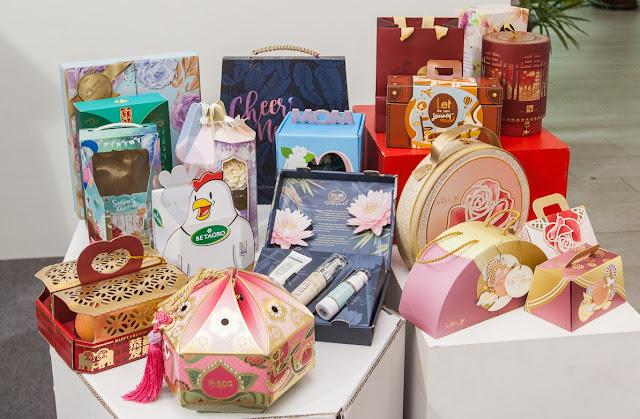
A Deep Dive into Packaging Business Strategy
to Extend its Lead In Market Dominance Amid Tense Competition
In our everyday life, we come into contact with various packaging materials from squeezing a toothpaste tube, opening a wrapped food packages to buying goods wrapped in packaging made from diverse materials. The faster paced lifestyle drives the needs for more convenience. As a result, the global demand for packaging has increased substantially, especially in fast food and e-commerce industries.
The anticipated growth results in rising fierce competitions between existing players and newcomers that continuously compete to dominate the market. Among them is SCG that has transformed from “Paper Business,” which is facing lessening demand for printing and writing paper, into “Packaging Business” with the aim to become Total Packaging Solutions Provider since 2015 and has continued to sustain growth with multiple business expansion through its investments and acquisitions across ASEAN region.
“At present, Packaging Business of SCG can produce a total capacity of 2.5 million tons of packaging paper. If excluding China, SCG is the leading company that reaches the highest production in ASEAN. We gain a 22-25% market share in each country. Thai operations have a production capacity of 1.8 million tons while Vietnam and the Philippines’s production capacities made 500,000 tons and 200,000 tons respectively. Vietnam and the Philippines are the huge active market with strong growth potential driven by over a hundred million people with high purchasing power and a thriving industrial sector.”
"We also acquired food packaging business in Malaysia aimed to satisfy the needs of the large fast-food chain such as McDonald's and acquired a majority stake in Fajar, a leading paper and packaging business in Indonesia. The goal of acquisitions is to deliver total packaging solutions ranging from product packaging, plastic wrap, and logistic packaging on top of design and packaging printing to satisfy the ASEAN customers with SCG products and services as we stand as Total Packaging Solutions Provider," Mr. Tanawong Areeratchakul, President of Packaging Business at SCG, outlined the business growth prospect.
Developing Business Strength From Inside Out to Cope with External Challenges Although there are external factors affecting business operations spawned by the US-China trade war which push the production out of China to ASEAN, SCG aims to seize manufacturing relocation opportunity, therefore the development of the company’s capability begins in prospect to better meet the customer demands. A series of efforts include the adoption of digital technology and product development and total service solutions in 3 dimensions: 1) Delivering product presentation with effective channels to reach the largest audience, customers who need packaging for domestic trade and those for export purposes; 2) Staff capability improvement; 3) Product design and material selection service to meet the customer needs by organizing an annual packaging design competition to empower young designers.
Digital Technology, Key Element for Enhanced Competitiveness
SCG adopts digital technology to increase Packaging Business' competitiveness and to meet customer demands better. Meanwhile, it can also be further explored and developed into new solutions.
Mr. Tanawong said in this matter, “SCG leverage digital technology in an extensive range of functions from improving the predictability of machine maintenance without disturbing operations to enhancing the ability to inspect machine spare parts of each plant to help eliminate unnecessary purchases to achieve better precision and prevent avoidable loss of resources.
To resolve the incoherence issues caused by multiple plant areas, diverse customer needs and different sales representative in widespread areas, digital technologies are implemented to close the gap and deliver concordant information to all parties in order to plan better strategies to fit the customer needs. Besides, this approach helps streamline cost and logistics management. The adoption of digital technology in Vendor Management can help calculate the production capacity to meet the inventory stock or demands and can be developed into new solutions as well.
Pushing Circular Economy to Achieve Efficient Resource Usage
Packaging Business, SCG, strives to develop innovation to achieve the highest resource efficient utilization, minimize, extend, or reuse the resources in line with Circular Economy under the “SCG Circular Way” practice.
“We have both raw pulp materials and plastics that can produce products like paper straw or paper bag to cut the use of single-use plastic. 95-98% of paper packaging can be recycled in new productions in which such an effort comes close to achieve the circular economy goal. The production of Green Carton which not only reuses used paper scraps but also adds coating technology to provide improved durability with less raw material applied.”
Although plastic is regarded as the packaging material that can extend the product life with maximum efficiency, the proper plastic collection management is required to enable easier recycling. Therefore, we increase the “mono-material” plastic packaging to 40% of all plastic packaging production. We use the same materials to generate Multilayer Laminated: Mono Material where the products employ the same quality level but can be easier recyclable. This is in line with the company joining CEFLEX (A Circular Economy for Flexible Packaging) to deliver products, services, and solutions and develop more eco-friendly packaging.
“Moreover, we reached out to many partners and encouraged concept adoption. We collaborated with Tesco Lotus to collect used carton boxes and transform them into paper bags. We have expanded the collaborations to 3 more companies. SCG also works with clients to develop fibro zeal paper bags that employs anti-humidity with increased recyclability. SCG also promotes the circular economy concept among employees in order to push forward ideas to customers and foster waste management efforts in the community surrounding the plant.” President of Packaging Business, SCG, explained the company’s strategies for effective implementation for the circular economy.
Trends and Growth Opportunities for Packaging Business in the Future
Mr. Tanawong concluded, “In the future, the demand for pulp paper will not fall but instead be converted into other forms. As a result, businesses need to generate a broader range of products i.e., creating dissolving pulp from eucalyptus plantations to produce rayon fibers as cotton replacement for textile industry; hygiene paper for hygiene products; product for rising demand market i.e., easy-to-open packaging, or medical packaging i.e., adult diapers for seniors on top of trends of more convenient packaging i.e., smaller packages for smaller items such as packaging for one banana, and packaging to meet an increasing demand for fast-food packaging due to the hustling lifestyle. As a result, flexible packaging and rigid plastic packaging vigorously thrive in the food and beverage business. In addition, customer product i.e., cosmetic and Industrial packaging i.e., tray in the phone boxes are expected to grow further.”
All these strategies are commitments of Packaging Business, SCG, with a mission to nurture continued growth. The Company is expected 5-7% growth in 2019 by focusing on building greater growth in the region to beat the country’s growth rate with the accelerated development of competitiveness through digital technology on top of achieving goals to meet the customer needs through product development and total solution under the circular economy concept to create opportunities amid current and future challenges.



